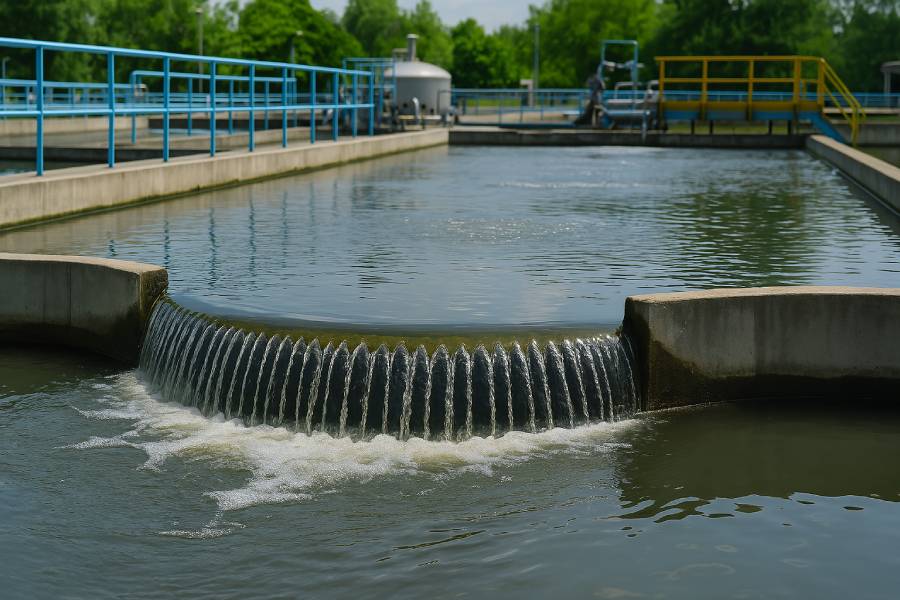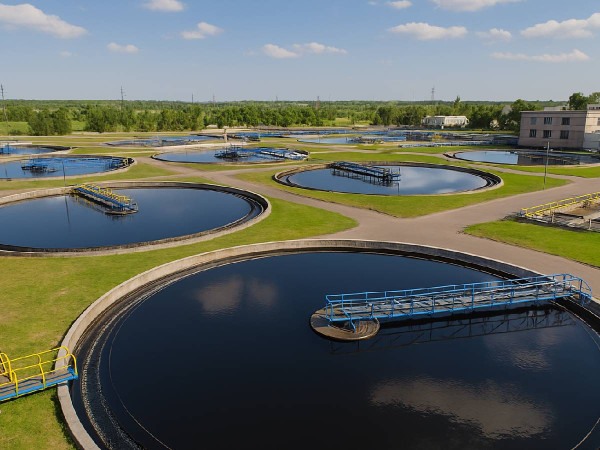News & Blogs
The Science Behind Waste Water Treatment: What Happens After the Flush

Introduction: Where Does It All Go?
Ever wondered what happens after you flush the toilet or pull the plug in your sink? It’s easy to take that “out of sight, out of mind” moment for granted but behind every flush lies a fascinating and essential process called waste water treatment.
This journey of used water, often unseen and underappreciated, is a remarkable intersection of science, engineering, and environmental stewardship. Treating wastewater is not just about getting rid of what's unpleasant it's about protecting our rivers, oceans, drinking water, and the health of our communities.
Let’s follow the trail and discover how this dirty water becomes clean again.
Understanding Waste Water
Before diving into the treatment process, it’s important to understand what wastewater actually is and where it comes from.
What is Waste Water?
Wastewater is any water that has been used and affected by human activity. It typically contains a mix of:
- Organic matter (like food particles or human waste)
- Pathogens (bacteria and viruses)
- Chemicals (from cleaning products or industrial waste)
- Nutrients (like nitrogen and phosphorus)
- Suspended solids (soil, oils, grease, etc.)
Types of Waste Water
There are three main categories:
- Domestic Wastewater: From homes—includes water from toilets, showers, sinks, laundry, and dishwashers.
- Industrial Wastewater: From factories and commercial facilities—may contain heavy metals, chemicals, and toxic pollutants.
- Stormwater Runoff: Rainwater that collects pollutants as it flows over roads, rooftops, and landscapes into sewers.
Each type requires careful treatment, and sometimes, different methods altogether.
The Science at Work: Key Treatment Stages
Waste water treatment is a multi-stage process designed to mimic and accelerate nature’s way of purifying water. It generally consists of three major treatment phases: primary (physical), secondary (biological), and tertiary (chemical or advanced).
1. Primary Treatment (Physical Processes)
This stage involves the removal of large solids and debris.
- Screening: Large objects (plastic, rags, sticks) are removed by metal grates.
- Sedimentation: Wastewater flows into large tanks where heavier solids settle to the bottom, forming sludge, while lighter materials float to the surface and are skimmed off.
Science at play: Gravity is the driving force here—denser particles naturally settle in still water.
2. Secondary Treatment (Biological Processes)
This is where microorganisms take center stage.
- Aeration Tanks: Air is pumped into the wastewater to encourage the growth of aerobic bacteria, which digest organic pollutants.
- Activated Sludge: Clumps of bacteria form and feed on waste, clumping together into flocs.
- Secondary Clarification: The bacterial flocs settle out, separating clean water from biological mass.
Science at play: This process replicates natural microbial activity found in rivers and wetlands but in a controlled, accelerated environment.
3. Tertiary Treatment (Chemical & Advanced Processes)
This final stage polishes the water, making it safe for discharge or reuse.
- Filtration: Sand filters or membranes remove remaining particles.
- Chemical Treatment: Chlorine or ozone may be added to disinfect the water.
- Nutrient Removal: Chemicals or bacteria remove excess nitrogen and phosphorus.
Science at play: Chemical reactions neutralize harmful substances, while advanced filtration traps even microscopic pollutants.
Advanced Technologies and Innovations
Modern waste water treatment has come a long way. Today, facilities around the world are using cutting-edge technologies to treat water more efficiently and sustainably.
Notable Innovations Include:
- Membrane Bioreactors (MBRs): Combine biological treatment and membrane filtration for high-quality effluent.
- UV Disinfection: Uses ultraviolet light to destroy pathogens without chemicals.
- Anaerobic Sludge Digesters: Break down sludge in oxygen-free environments to produce biogas a renewable energy source.
- Constructed Wetlands: Engineered ecosystems that naturally filter wastewater using plants and microbes.
These innovations not only improve treatment quality but also reduce energy use and environmental impact.
What Happens to the Treated Water and Sludge?
Once treatment is complete, we’re left with two main products: clean water and sludge.
Treated Water
- Often discharged into rivers, lakes, or oceans, depending on regulatory standards.
- Increasingly reused for:
- Agricultural irrigation
- Industrial processes
- Groundwater recharge
- Even toilet flushing in urban systems (recycled water networks)
Sludge
- Treated further through digestion, composting, or dewatering.
- May be used as fertilizer if safe, or disposed of in landfills or incinerated.
This circular approach minimizes waste and contributes to a more sustainable urban ecosystem.
The Bigger Picture: Environmental and Public Health Impact
Why does waste water treatment matter so much? Because untreated or poorly treated wastewater is a serious threat to both the planet and people.
Key Benefits:
- Protects Ecosystems: Prevents pollution of rivers, lakes, and oceans, preserving aquatic life.
- Safeguards Public Health: Reduces the spread of waterborne diseases like cholera and dysentery.
- Promotes Sustainability: Enables water reuse and energy recovery through biogas.
- Supports Urban Growth: Ensures safe sanitation for growing populations.
In a world facing climate change, water scarcity, and pollution, treating wastewater responsibly is more important than ever.
Final Thoughts
The next time you flush, pause for a moment. That simple act sets off a complex, scientific journey one that protects our health, our environment, and our future.
Waste water treatment is one of the unsung heroes of modern civilization. With continued innovation and public awareness, we can ensure that every drop of used water gets a second chance to do good.



-1742900752.jpg)